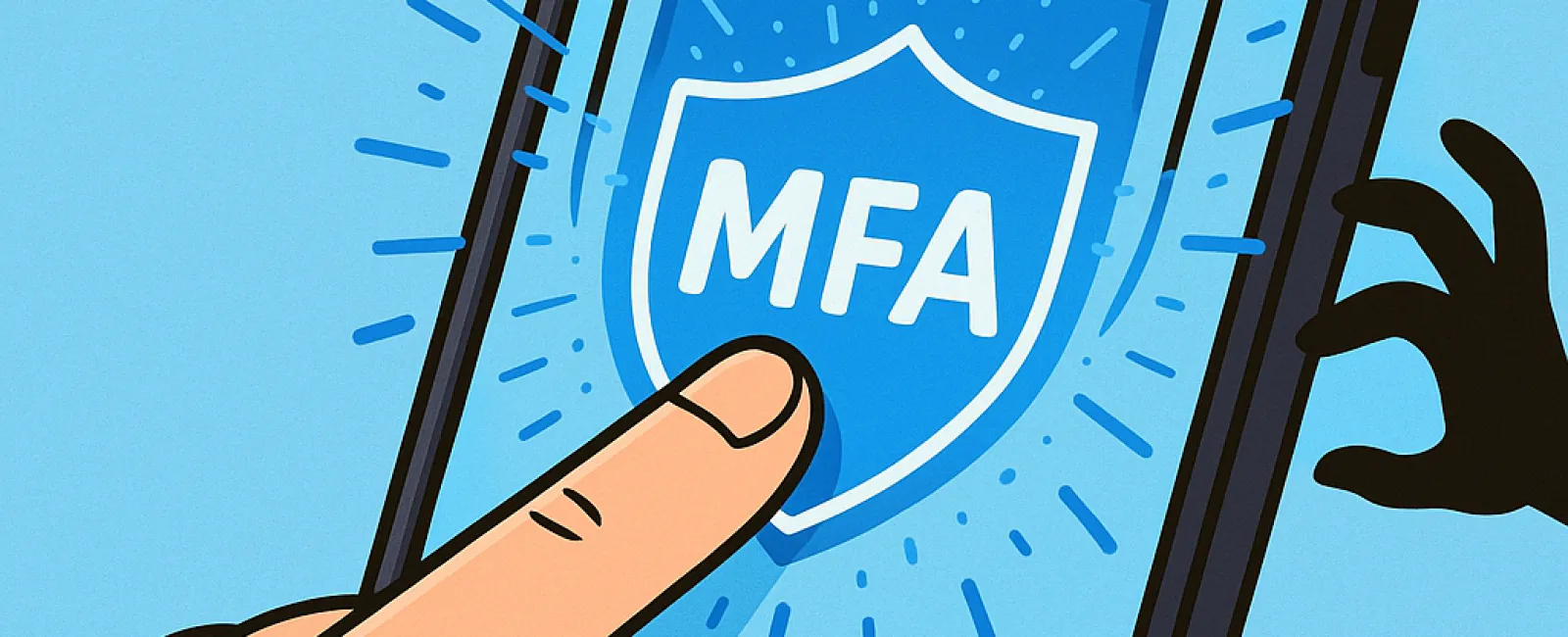October 27, 2025
Just as you wouldn't drive without buckling your seatbelt or leave your office unsecured overnight, going online without enabling multifactor authentication (MFA) is equally risky.
MFA acts as an essential second barrier protecting your digital life. Instead of relying solely on a password—which can be stolen, guessed, or phishing targets—it requires an additional verification step like a text message code, authentication app alert, or biometric scan. This means even if your password is compromised, hackers can't get in without this crucial extra layer.
Just One Extra Step Can Secure Your Entire Digital World
Think of your password as locking your front door, while MFA is like activating your home alarm system before you sleep. While optional, MFA provides peace of mind by ensuring that if one security measure falters, another stands guard.
The concept might also be called "two-step verification," "two-factor authentication," or a "one-time password," but all these terms share the same meaning: verifying your identity with two or more methods before granting access to sensitive data.
MFA comes in many forms—from account confirmation emails and bank security questions to text codes, push notifications, and phone calls. Most require just a tap or quick code entry.
How MFA Protects You in Real-World Scenarios
On your end, MFA is quick and simple—just enter a code or approve a prompt. On the hacker's side, it's a major obstacle. If someone tries to access your account without permission, MFA triggers alerts or requires a code, warning you immediately of a breach attempt and giving you time to strengthen your password before any data is stolen.
MFA also blocks unauthorized users who might have your password. Even if an employee is tricked into revealing credentials, hackers hit a dead end without that second verification step. Microsoft reports that enabling MFA reduces account compromise risks by over 99.2%, soaring to 99.99% for accounts with MFA fully activated.
Top Accounts Where MFA Is Absolutely Essential
Prioritize enabling MFA on these critical platforms:
- Banking and financial apps
- Email and cloud storage services
- Social media profiles
- Work systems containing client or proprietary data
Activating MFA is typically straightforward. Popular platforms offer built-in options—simply pick your preferred method and integrate it into your daily routine. Adding an authenticator app can significantly boost security for employee logins.
In summary, MFA provides a rapid, no-cost shield that stops most hacking attempts in their tracks. Invest a few minutes now to enable it and save weeks or even years of potential damage control and data recovery later.
The simplest way to activate MFA is by consulting your IT provider. A skilled Managed Service Provider (MSP) ensures a smooth setup experience. If you need expert cybersecurity guidance, click here or call us at 702-896-7207 to schedule a 15-Minute Discovery Call with our team today.



